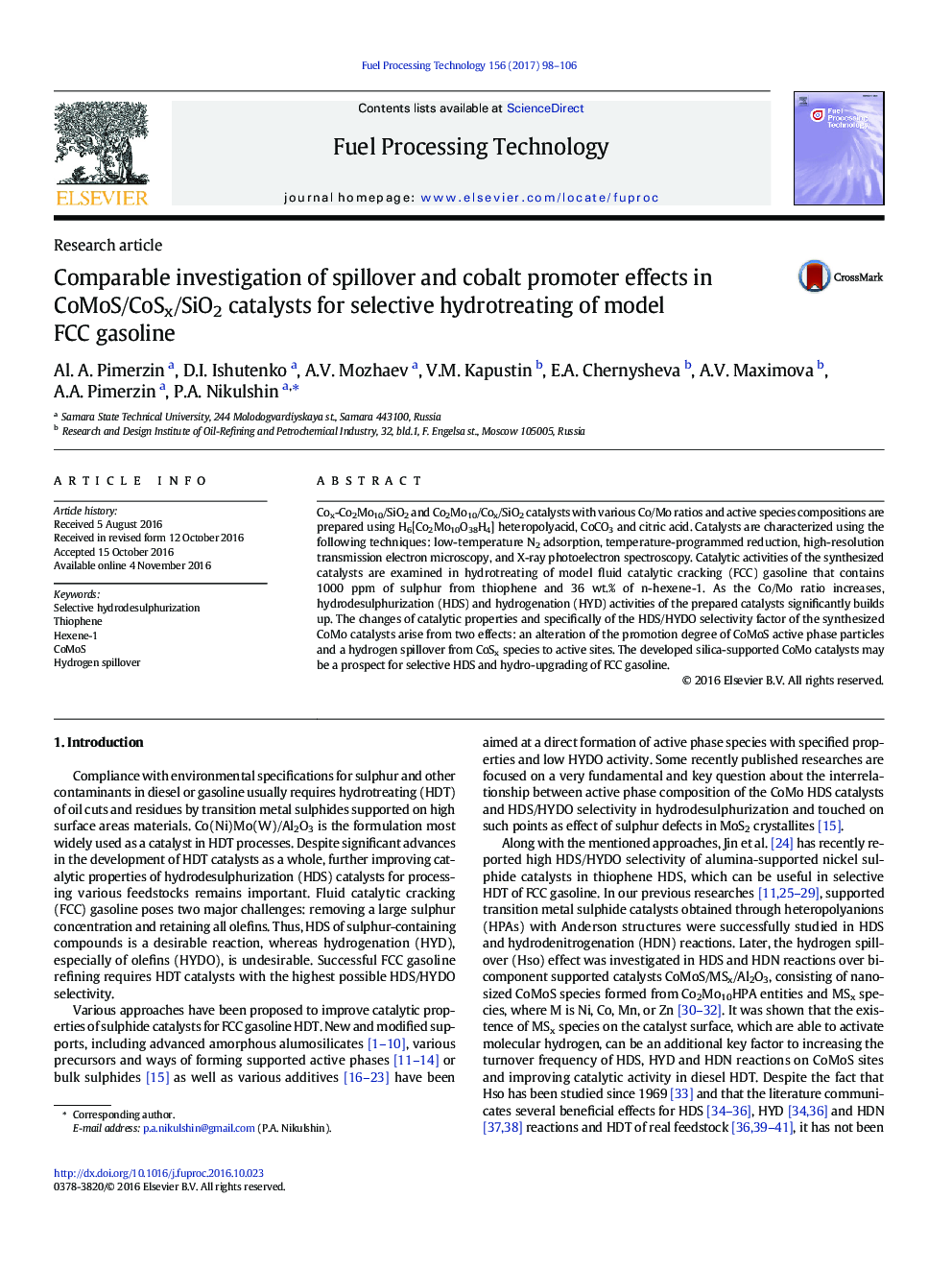| Article ID | Journal | Published Year | Pages | File Type |
|---|---|---|---|---|
| 6476602 | Fuel Processing Technology | 2017 | 9 Pages |
â¢Cox-Co2Mo10/Cox/SiO2 catalysts with various Co content in precursor or support are prepared.â¢Thiophene and hexene-1 conversions increase with Co loading.â¢HDS/HYDO selectivity increases with CoMoS promotion.â¢HDS/HYDO selectivity decreases due to CoSx/SiO2 and H2 spillover.â¢TPR confirms that CoSx/SiO2 facilitates the reduction of MoS2/SiO2 in separate bed.â¢Catalyst with fully promoted edges' active sites has highest selectivity factor.
Cox-Co2Mo10/SiO2 and Co2Mo10/Cox/SiO2 catalysts with various Co/Mo ratios and active species compositions are prepared using H6[Co2Mo10O38H4] heteropolyacid, CoCO3 and citric acid. Catalysts are characterized using the following techniques: low-temperature N2 adsorption, temperature-programmed reduction, high-resolution transmission electron microscopy, and X-ray photoelectron spectroscopy. Catalytic activities of the synthesized catalysts are examined in hydrotreating of model fluid catalytic cracking (FCC) gasoline that contains 1000Â ppm of sulphur from thiophene and 36Â wt.% of n-hexene-1. As the Co/Mo ratio increases, hydrodesulphurization (HDS) and hydrogenation (HYD) activities of the prepared catalysts significantly builds up. The changes of catalytic properties and specifically of the HDS/HYDO selectivity factor of the synthesized CoMo catalysts arise from two effects: an alteration of the promotion degree of CoMoS active phase particles and a hydrogen spillover from CoSx species to active sites. The developed silica-supported CoMo catalysts may be a prospect for selective HDS and hydro-upgrading of FCC gasoline.
Graphical abstractDownload high-res image (100KB)Download full-size image
